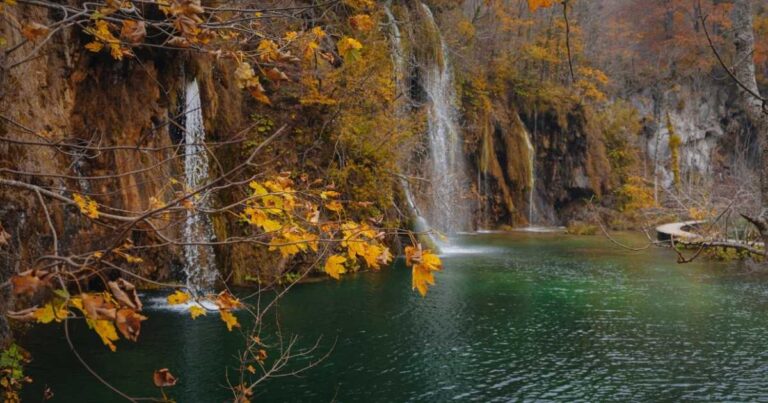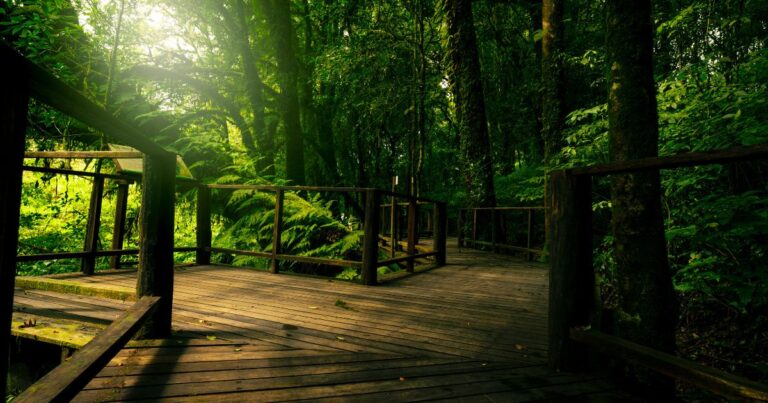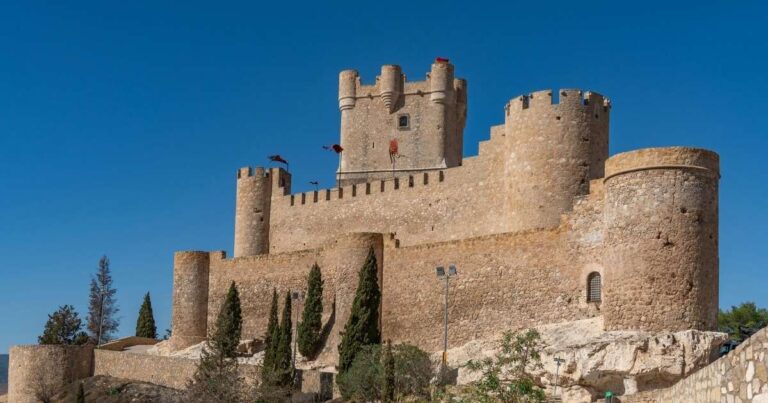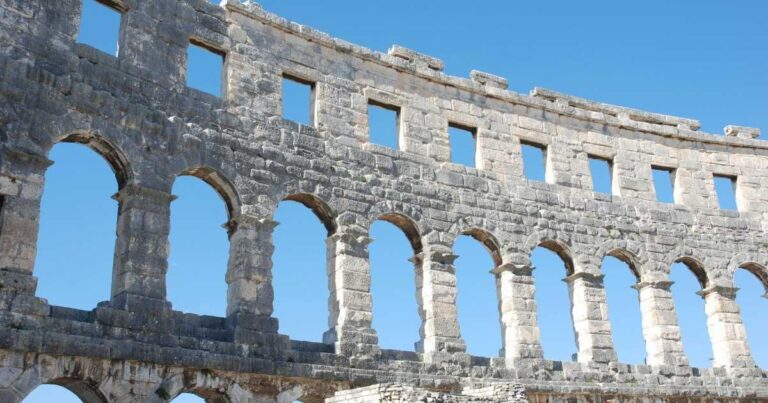Discovering the best time to visit Croatia is essential for making the most of your holiday in this beautiful Mediterranean country. Whether you’re a beach lover, a nature enthusiast, or a history buff, Croatia offers something for every traveler. From the sun-drenched beaches along the Adriatic coast to the enchanting national parks and the historic cities like Dubrovnik, each season in Croatia brings its own unique experiences and opportunities. This guide will help you determine the perfect time to explore Croatia’s diverse landscapes and vibrant culture.
When is the Best Time to Visit Croatia for Beach Lovers?
What are the Ideal Months for Beach Activities?
For beach enthusiasts, the best time to visit Croatia is during the summer months of June to September. During this period, the weather is warm and sunny, making it a perfect time for beach activities. July and August are particularly popular months, as the sea temperatures are ideal for swimming, and the coastal towns are bustling with life. However, it’s a good time to note that these months can be crowded, so if you prefer a more relaxed atmosphere, consider visiting in June or September. These shoulder months offer the same great weather with fewer tourists, providing a more intimate beach experience.
How Does the Temperature Affect Beach Visits?
The temperature along the Croatian coast plays a significant role in planning your beach visits. In the peak summer months, temperatures can soar to around 30°C (86°F), creating a perfect setting for sunbathing and water sports. However, this heat can also make midday activities uncomfortable, so it’s advisable to enjoy the beaches in the early morning or late afternoon. The warmth of the sea, reaching up to 25°C (77°F), invites swimmers and divers to explore the underwater world without hesitation. If you’re not a fan of intense heat, the moderate temperatures in late spring or early autumn in Croatia provide a wonderful time to visit the beaches without the sweltering sun.
Is Summer in Croatia the Best Time for Beaches?
Summer in Croatia undeniably stands as the best time for beachgoers. Croatia during the summer offers a vibrant atmosphere, with numerous festivals, open-air concerts, and beach parties taking place along the coast. It’s a lovely time to experience the lively Croatian culture and indulge in local cuisine at seaside restaurants. While summer is the peak season in Croatia, the stunning beaches and crystal-clear waters make it worth the trip. However, if you’re looking for a quieter escape, consider visiting the islands or less frequented beaches to enjoy a more serene environment.
What is the Best Month to Visit Croatia for Exploring National Parks?
Which National Parks are Best Visited in Specific Seasons?
Croatia is home to several breathtaking national parks, each offering unique landscapes and experiences. The best time to go to Croatia to explore these parks is during spring or autumn. Plitvice Lakes National Park, known for its cascading lakes and waterfalls, is particularly stunning in spring when the water levels are high, and the flora is in full bloom. Similarly, Krka National Park is a must-visit in late spring, offering lush greenery and fewer crowds. In autumn, Paklenica National Park attracts hikers with its cooler temperatures and vibrant foliage, making it an ideal time for trekking and climbing.
Are There Advantages to Visiting During the Shoulder Season?
The shoulder season, which includes late spring and early autumn, is a great time to visit Croatia’s national parks. During these months, the weather is pleasant, and the parks are less crowded, allowing for a more immersive experience in nature. The reduced number of visitors means that you can explore the parks at your own pace, without the hustle and bustle of peak season tourists. Additionally, accommodation and travel costs are generally lower during the shoulder season, making it a more budget-friendly option for travelers looking to experience Croatia’s natural beauty.
How Does Spring in Croatia Enhance National Park Visits?
Spring in Croatia is a beautiful time to explore the country’s national parks. As the winter snows melt, the parks come to life with vibrant flora and fauna. This season offers a wonderful time to witness the rebirth of nature, with colorful wildflowers and lush greenery providing a stunning backdrop for hikes and nature walks. The mild temperatures make it comfortable for outdoor activities, and the longer daylight hours give you more time to explore. Visiting in spring also allows you to enjoy the parks without the intense heat of summer or the crowds that accompany peak tourist season.
Is Winter in Croatia a Good Time to Visit?
What Activities Can You Enjoy During Winter in Croatia?
Winter in Croatia offers a unique charm, especially for those who enjoy a quieter and more intimate travel experience. While the coastal regions are less crowded, the inland areas, particularly the mountains, become a haven for winter sports enthusiasts. Skiing and snowboarding in resorts like Sljeme near Zagreb or Platak near Rijeka are popular activities during this season. Additionally, Croatia’s historic cities, such as Dubrovnik and Split, offer a peaceful ambiance during winter, allowing visitors to explore their ancient streets and landmarks without the usual crowds. Winter is also a perfect time to experience traditional Croatian cuisine, with hearty dishes and warm hospitality.
How Does the Low Season Impact Travel Plans?
The low season in Croatia, typically from November to March, impacts travel plans by offering lower prices and fewer tourists. This period is considered the off-peak time of year to visit, making it ideal for budget-conscious travelers. With fewer crowds, you can enjoy a more relaxed pace and take in the sights without long queues or busy streets. However, some tourist facilities and attractions may have reduced operating hours, so it’s essential to plan accordingly. Despite this, the low season provides a unique opportunity to experience Croatia’s cultural and historical sites in a more tranquil setting.
Which Destinations Are Best Experienced in Winter?
While the coastal areas may see a decrease in activity during winter, several destinations in Croatia offer a magical experience. Zagreb, the capital city, is renowned for its festive Christmas markets and vibrant winter events. The city’s streets light up with beautiful decorations, creating a festive atmosphere that’s perfect for holidaymakers. Dubrovnik, though quieter in winter, allows visitors to explore its ancient walls and historic center without the summer crowds. Additionally, the Plitvice Lakes National Park transforms into a winter wonderland, with frozen waterfalls and snow-covered landscapes offering a stunning backdrop for winter photography.
What is the Best Time of Year to Visit Dubrovnik?
How Does the Time to Visit Dubrovnik Influence Your Experience?
Choosing the best time to visit Dubrovnik can significantly influence your experience in this historic city. While summer may attract many visitors due to its warm weather and numerous cultural events, it also means dealing with larger crowds and higher prices. Visiting during the shoulder season, particularly in May or September, offers a balance of pleasant weather and fewer tourists. This time of year allows you to explore the city’s medieval architecture, picturesque streets, and stunning coastal views without the hustle and bustle of peak season. Additionally, the cooler temperatures make it more comfortable to enjoy outdoor activities such as walking tours and boat trips.
Is There a Best Month to Visit Dubrovnik for Fewer Crowds?
For those seeking a quieter experience, the best month to visit Dubrovnik is typically October. During this time, the tourist numbers dwindle, allowing for a more intimate exploration of the city’s historic sites. The weather remains mild, with temperatures averaging around 18°C (64°F), making it comfortable for sightseeing. October also marks the beginning of the low season, offering more affordable accommodation and travel options. Visiting Dubrovnik in this month provides a unique opportunity to enjoy the city’s beauty and cultural heritage without the summer rush.
What are the Weather Considerations When Planning a Trip to Dubrovnik?
The weather plays a crucial role in planning your trip to Dubrovnik. Summers are hot and dry, with temperatures often exceeding 30°C (86°F), making it an ideal time for beach activities but less so for extensive sightseeing. In contrast, spring and autumn offer milder weather, with temperatures ranging from 15°C to 25°C (59°F to 77°F), providing a comfortable environment for exploring the city’s attractions. Winter, while cooler and wetter, offers a different charm, with fewer tourists and a more relaxed pace. It’s important to consider the weather when planning your activities, as it can enhance or hinder your experience depending on your preferences.
How Do Different Seasons in Croatia Affect Travel Plans?
What are the Advantages of Summer in Croatia?
Summer in Croatia is undoubtedly a peak season for tourism, offering numerous advantages for travelers. The long, sunny days provide ample time to explore the country’s stunning coastlines, vibrant cities, and cultural festivals. It’s a wonderful time to sail in Croatia, with ideal conditions for yachting and island hopping. The summer season also brings a lively atmosphere, with open-air events, concerts, and nightlife in full swing. However, it’s important to prepare for the crowds and higher prices associated with this season. Booking accommodations and attractions in advance can ensure a smooth and enjoyable summer vacation in Croatia.
Is the Shoulder Season a Great Time to Visit Croatia?
The shoulder season, encompassing late spring and early autumn, is often considered the best time of year to visit Croatia. This period offers a perfect balance of good weather, fewer crowds, and more affordable prices. The mild temperatures make it an ideal time to explore both the coast and inland regions, with plenty of opportunities for outdoor activities such as hiking, cycling, and sightseeing. The shoulder season also provides a more authentic experience, as you can engage with locals and experience Croatian culture without the overwhelming tourist presence. Overall, it’s a great time to visit Croatia if you’re looking for a more relaxed and budget-friendly vacation.
How Does the Low Season Offer Unique Experiences?
The low season in Croatia, typically from November to March, offers unique experiences that differ from the bustling summer months. With fewer tourists, you can enjoy a more intimate and personal connection with the country’s culture and history. This time of year is perfect for exploring Croatia’s charming towns and cities at a leisurely pace, with the added benefit of lower accommodation and travel costs. The winter months also allow for unique activities such as visiting Christmas markets, enjoying winter sports in the mountainous regions, and experiencing traditional Croatian cuisine in a cozy setting. The low season presents an opportunity to see a different side of Croatia, one that is quieter yet equally captivating.
FAQS
Q: What is the best time to travel to Croatia?
A: The best time to travel to Croatia depends on what you want to experience. The shoulder season in Croatia, which includes May, June, September, and October, is often considered the best time to visit. During these months, you can enjoy pleasant temperatures in Croatia and fewer crowds.
Q: When is the peak tourist season in Croatia?
A: The peak tourist season in Croatia is during the summer months, specifically July and August. This is when the weather is hottest, and many tourists flock to the beaches and islands.
Q: Is September a good month in Croatia for a visit?
A: Yes, September is one of the best months to visit Croatia. The weather is still warm, the sea is perfect for swimming, and the crowds have started to thin out, making it a fantastic time for a trip to Croatia.
Q: What is the weather like in Croatia in October?
A: The temperature in Croatia in October is cooler, especially in the northern regions, but it remains mild and pleasant. It’s a beautiful time to visit, and you can enjoy the fall in Croatia with fewer tourists.
Q: How is Croatia in December for tourists?
A: December in Croatia is a charming time to visit, especially for experiencing the best Christmas markets across Croatia. The weather is cooler, but the festive atmosphere makes it a special time to explore the cities.
Q: Why is the shoulder season in Croatia recommended for tourists?
A: The shoulder season in Croatia is recommended because it offers a balance of good weather, fewer tourists, and often lower prices. It’s a great time to visit the national parks and enjoy the natural beauty without the summer crowds.
Q: Is it a bad time to visit Croatia in January and February?
A: While January and February are colder months in Croatia, it is not necessarily a bad time to visit if you enjoy winter activities. The coastal areas are quieter, and it’s a great time to visit Zagreb or enjoy indoor attractions.
Q: What can I expect when visiting Croatia in March and April?
A: Visiting Croatia in March and April marks the beginning of the spring season. The temperature in Croatia starts to rise, and it’s a great time for exploring cities and countryside with blossoming landscapes.
Q: Is August too crowded for a trip to Croatia?
A: August is one of the busiest months in Croatia, especially in popular tourist spots. If you prefer a quieter experience, it might be better to plan your trip during the shoulder season.
Q: What is the best time to enjoy sailing in Croatia?
A: The best time to enjoy sailing in Croatia is during the late spring and early fall months, particularly May, June, and September. These months offer great sailing conditions with warm weather and less crowded marinas.







